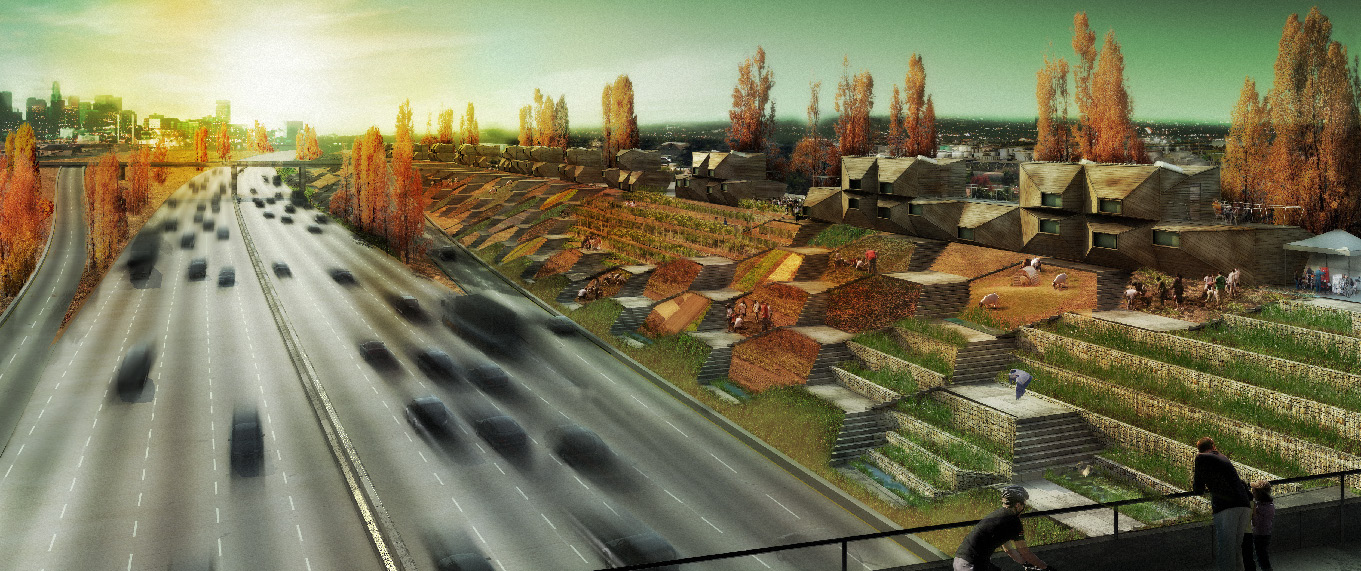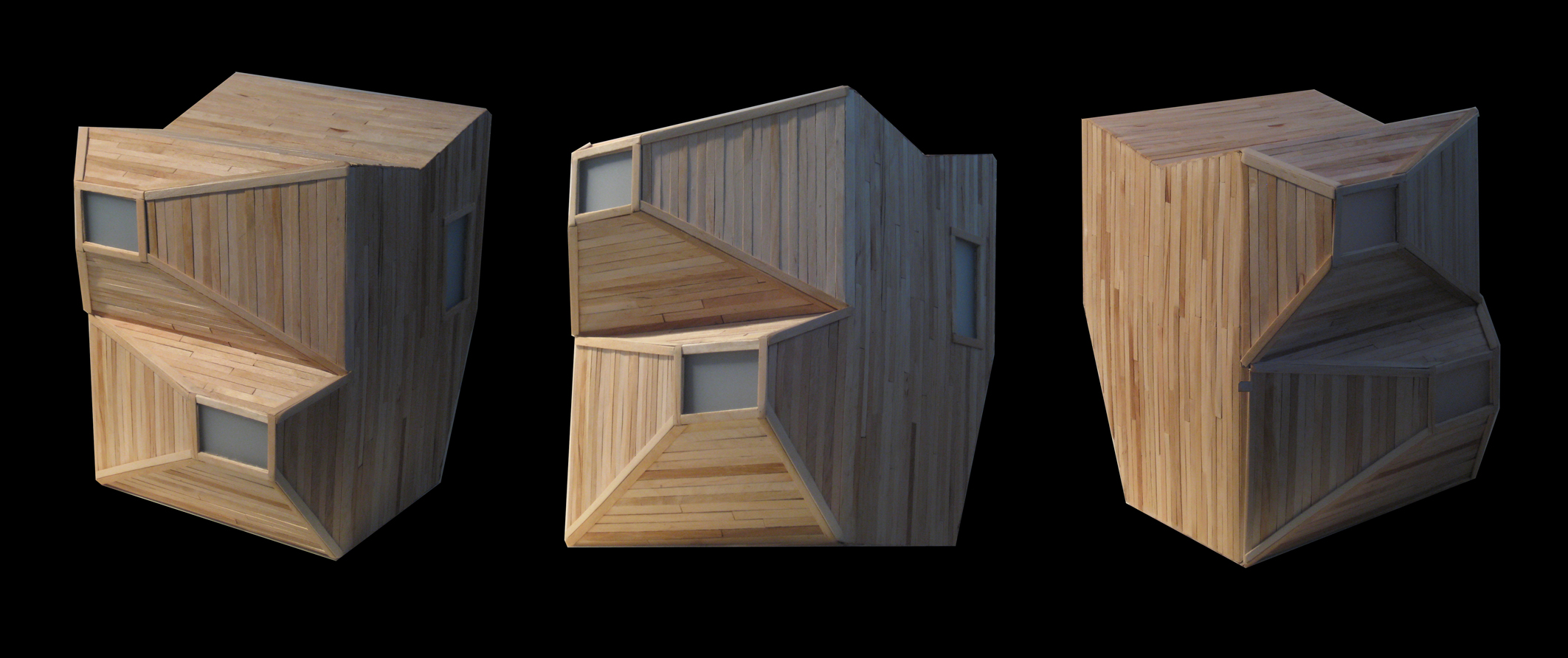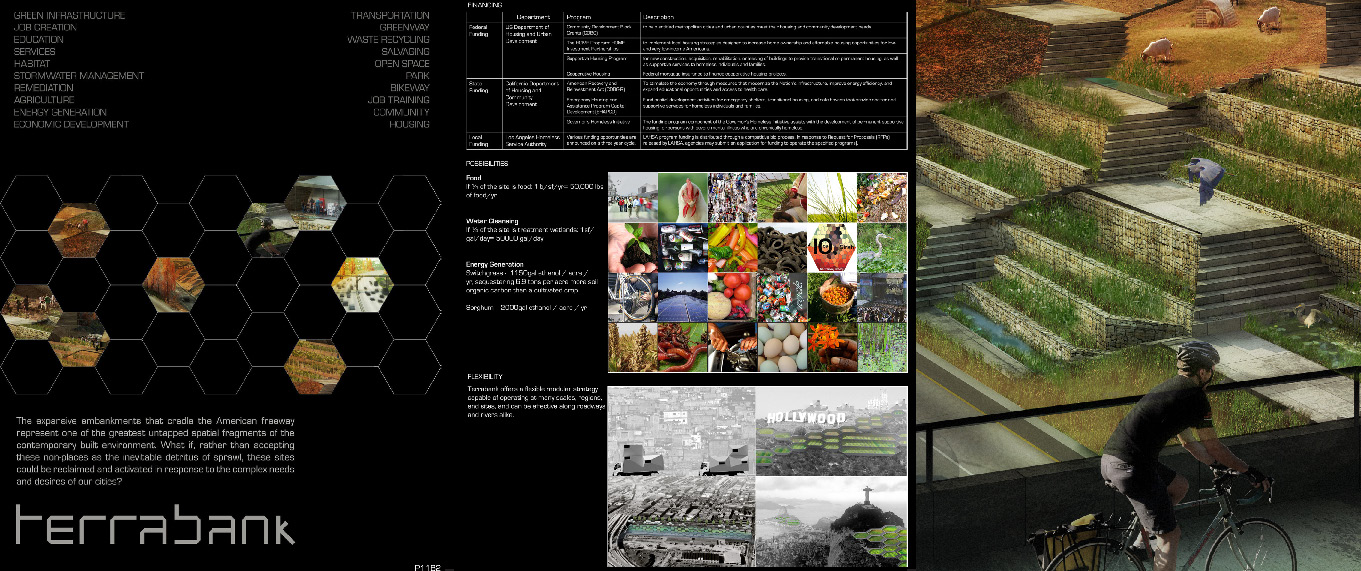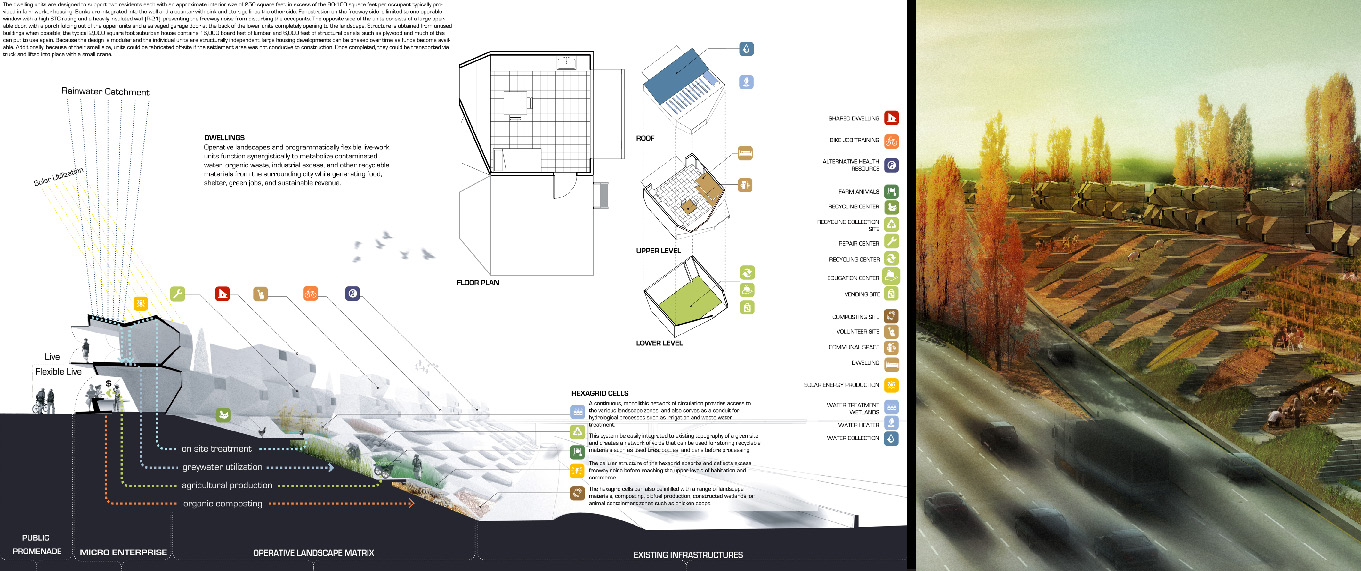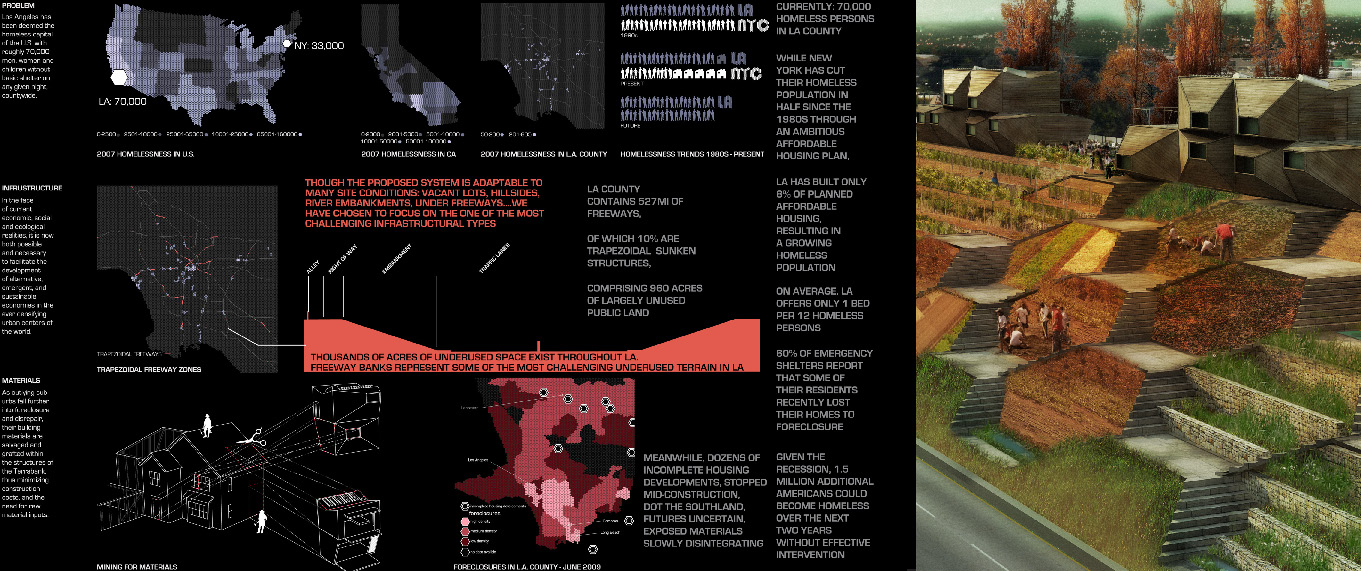WPA 2.0
Fletcher Studio submitted this entry to the WPA 2.0 competition, which called for innovative and systematic infrastructural solutions. The expansive embankments that cradle the American freeway represent one of the greatest untapped spatial fragments of the contemporary built environment. What if, rather than accepting these non-places as the inevitable detritus of sprawl, these sites could be reclaimed and activated in response to the complex needs and desires of our cities? In the face of current economic, social and ecological realities, it is now both possible and necessary to facilitate the development of alternative, emergent, and sustainable economies in the ever densifying urban centers of the world. Operative landscapes and programmatically flexible live-work units function synergistically to metabolize contaminated water, organic waste, industrial excess, and other recyclable materials from the surrounding city while generating food, shelter, green jobs, and sustainable revenue. A continuous, monolithic network of circulation provides access to the various landscape zones, and also serves as a conduit for hydrological processes such as irrigation and waste water treatment. Terrabanks are capable of facilitating a wide range of landscape and program types and can be deployed using phased development strategies and dynamic land uses that respond and adjust to existing climatological, topographic, demographic, economic and local site conditions. As a Terrabank grows more productive and dense over time, its fate rests on its ability to establish strong cultural and economic ties to its host community by providing inclusive and valuable amenities, public spaces, and economic opportunities for local residents.


